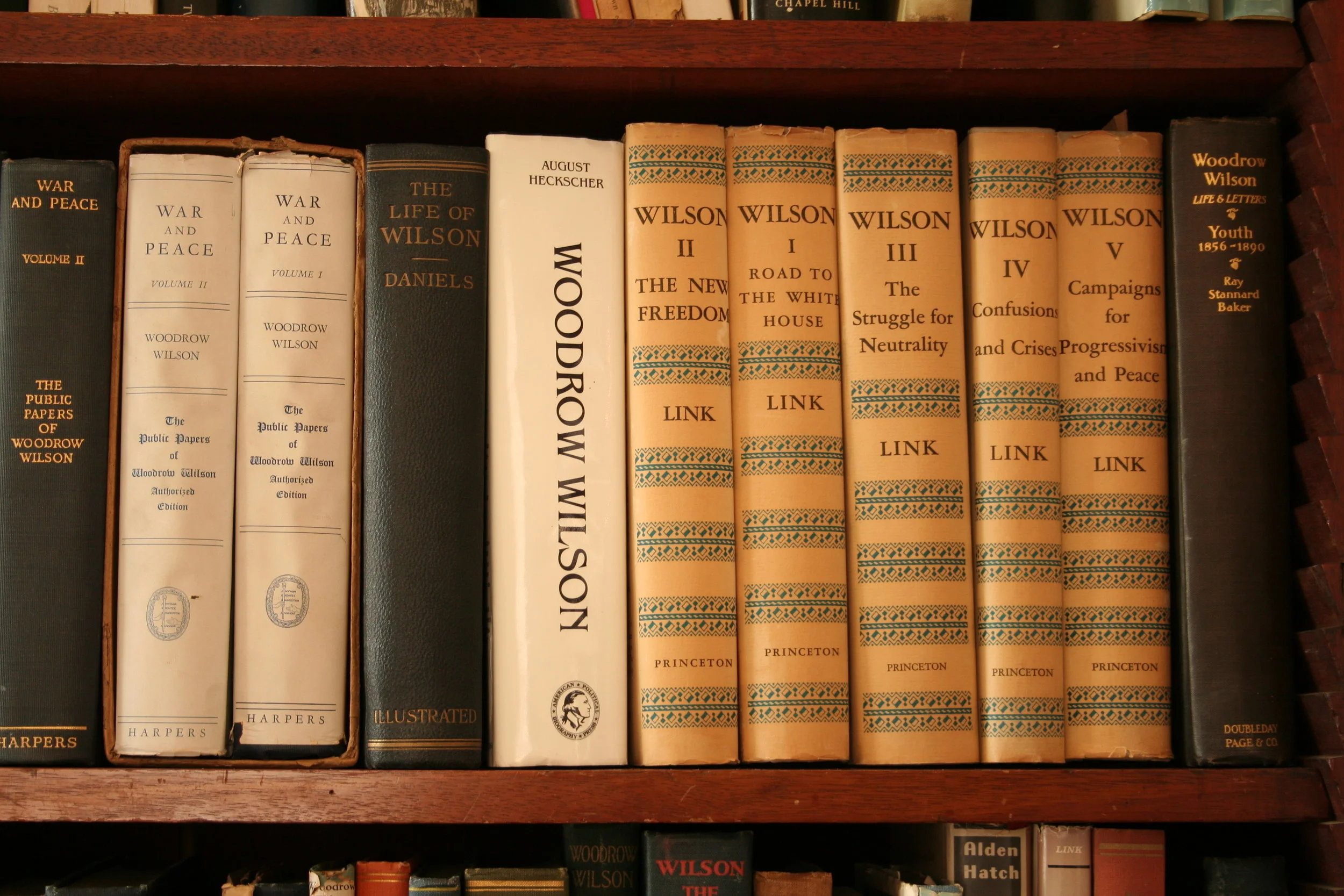Wilson's Sheep
/For several years, beginning in the spring of 1918, a flock of sheep grazed on the White House Lawn. After America entered World War I, the sheep helped to save manpower by keeping the grass trimmed. We don’t exactly who came up with the idea, but Dr. Cary Grayson contacted his horse racing friend Wiliam Woodward about getting some sheep for the president. Woodward sent along a small flock from his farm in Maryland by wagon.
Woodward understood that the idyllic appearance of sheep grazing on the lawn was part of the appeal of the project. Eventually, however, the flock was sheared, and two pounds of wool was given to each state. With governors acting as actioneers, the wool was sold to the highest bidders and the proceeds donated to the Red Cross War Fund.
Grayson wrote to Woodward on June 5, 1918, “I feel quite guilty for not writing to you long before this to tell you how much pleasure the sheep from Belair Farm have given the President and Mrs. Wilson.”
While the final figures from the state auctions were not yet available when Grayson wrote, he continued, “From what I heard was bid, the cheapest was $100 per pound and the highest was $5,000 per pound. At any rate, I think it is safe to predict that Belair Farm sheep lead the world in the production of the most pricely wool.” The total raised for the Red Cross by the state wool auctions was nearly $52,000.
Late in 1920, the sheep seem to have been returned to William Woodward, but they were highly sought after because of their presidential history. Henry Oxnard received a ram that he assured President Wilson would be kept as a pet and “receive the best of care.” Some of the sheep were later moved to Olney, Maryland where they continued to provide wool for Wilson’s admirers after his death.
Just last year, the Woodrow Wilson Presidential Library & Museum received a fascinating donation from the Donakowski family - wool from the White House sheep! JP Brunschwyler, a West Virginia engineer and Judith Donakowski’s father, had been one of the people who bid on the wool as part of a group and then put it in a safe deposit box, where it stayed for one hundred years. With this donation we can share a very tactile piece of evidence of the sheep that the president once kept in his yard.






